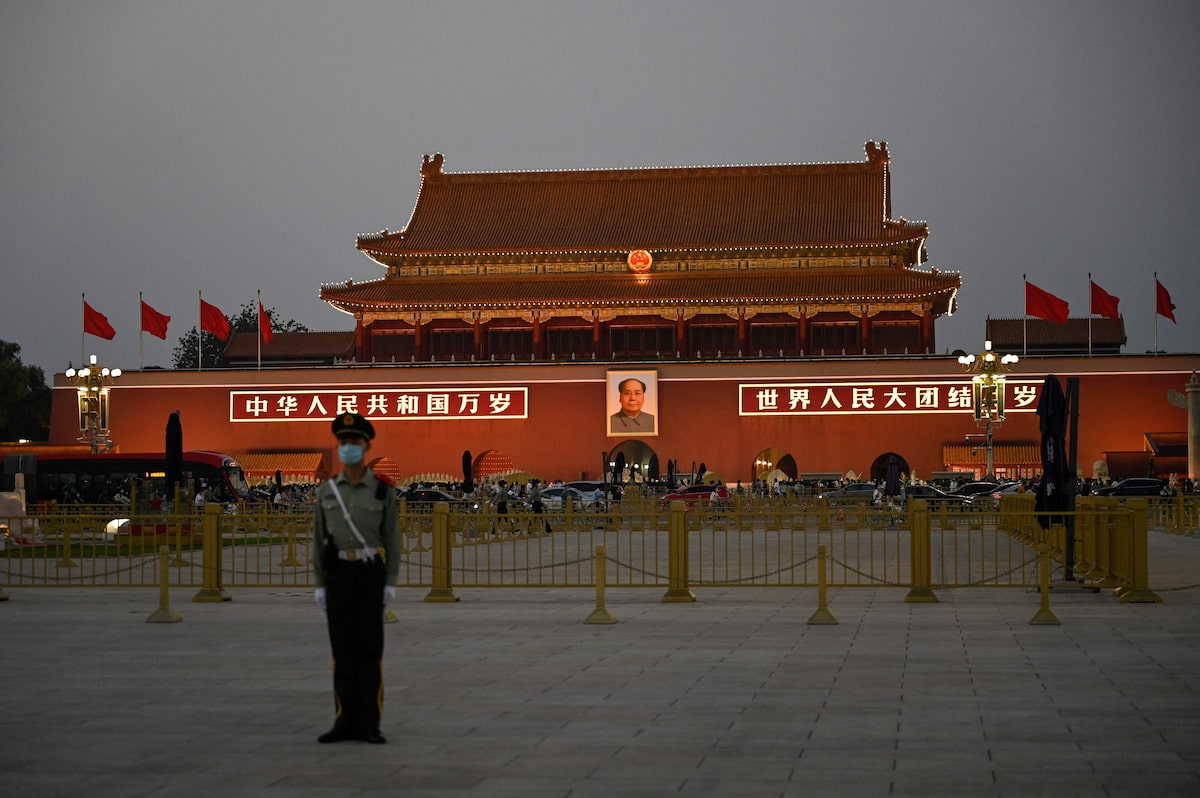China's Automotive Landscape: Challenges For Premium Brands Like BMW And Porsche

Table of Contents
Intense Competition from Domestic Brands
The competitive pressure within China's automotive landscape is immense, particularly from burgeoning domestic brands. This competition manifests in two primary forms: the rapid rise of Chinese electric vehicle (EV) manufacturers and the enhanced competitiveness of established domestic players.
Rise of Chinese EV Manufacturers
The meteoric rise of domestic electric vehicle (EV) brands like Nio, Xpeng, and BYD presents a significant threat to established premium brands. These companies are not just offering competitive technology and stylish designs; they are often undercutting premium pricing. This aggressive pricing strategy, coupled with their superior understanding of the Chinese consumer market, is significantly impacting premium brand sales.
- Aggressive pricing strategies: Domestic brands often offer competitive pricing and attractive financing options, making them more appealing to price-sensitive consumers.
- Deep understanding of the Chinese consumer: Local brands have an inherent advantage in understanding consumer preferences, cultural nuances, and marketing strategies within the Chinese market.
- Rapid technological advancements: Chinese EV manufacturers are rapidly innovating in battery technology, autonomous driving features, and connected car technologies.
- Strong government support: The Chinese government actively supports the development of domestic EV manufacturers through subsidies, tax breaks, and favorable regulations.
Established Domestic Players
Beyond the EV newcomers, long-standing domestic automakers like Geely and Great Wall Motors are also significantly upgrading their offerings. Leveraging advanced technology acquired through joint ventures and focusing on enhancing their brand image, these established players are increasingly encroaching on the premium segment.
- Joint ventures and technology transfer: Collaboration with international brands has facilitated technology transfer and the acquisition of valuable expertise.
- Improved quality and reliability: Domestically produced vehicles have seen significant improvements in quality and reliability, eroding the perception of inferiority compared to foreign brands.
- Targeted marketing campaigns: These companies utilize effective marketing campaigns that tap into national pride and emphasize value for money.
Navigating Regulatory and Infrastructure Hurdles
Navigating the regulatory landscape and developing robust infrastructure solutions are crucial challenges for premium brands operating in China. Stringent emission standards and import tariffs present significant hurdles to overcome.
Stringent Emission Standards
China's commitment to environmental protection is driving increasingly stringent emission regulations and a rapid shift towards electric vehicles. This necessitates substantial investment and adaptation from premium brands.
- Compliance costs: Meeting complex emission and safety standards requires significant investment in research, development, and testing.
- Charging infrastructure investment: The lack of widespread charging infrastructure poses a challenge, requiring investment in charging stations and related services.
- Local production pressures: Regulations often incentivize or mandate local production of EVs, requiring premium brands to establish manufacturing facilities within China.
Import Tariffs and Taxes
High import tariffs and taxes significantly increase the cost of imported vehicles, making them less competitive against locally produced alternatives. This situation forces premium brands to consider local manufacturing to maintain competitiveness.
- Increased costs: Importing vehicles and parts incurs substantial costs due to tariffs and taxes.
- Local manufacturing necessity: Establishing local manufacturing facilities is often essential to reduce costs and remain competitive.
- Supply chain complexities: Balancing global supply chain strategies with the requirements of local production presents logistical complexities.
Understanding Unique Consumer Preferences
Understanding the unique preferences and evolving demands of the Chinese consumer is paramount for success. Chinese consumers are highly tech-savvy and increasingly discerning in their brand choices.
Tech-Savvy Consumers
Chinese consumers are known for their early adoption of new technologies and expect cutting-edge features in their vehicles.
- Demand for ADAS: Advanced Driver-Assistance Systems (ADAS) are highly sought-after features.
- Connectivity and smart technologies: Integration of smart technologies, connectivity features, and digital interfaces are crucial for attracting consumers.
- Personalized user experiences: Tailored user experiences and personalization features are increasingly important.
Shifting Brand Loyalty
While brand prestige still holds influence, price sensitivity and openness to exploring new domestic brands are growing trends among Chinese consumers.
- Building brand awareness: Premium brands need to cultivate strong brand awareness and reputation within the Chinese market.
- Targeting younger generations: Adapting marketing strategies to resonate with younger, tech-savvy consumers is essential.
- Competitive financing: Offering competitive financing options and comprehensive after-sales services is crucial.
Conclusion
China's automotive landscape presents both massive opportunities and significant challenges for premium brands like BMW and Porsche. Successfully navigating this complex market requires a deep understanding of the intense competition from domestic brands, the regulatory environment, and the evolving preferences of Chinese consumers. Adapting to the rapid technological advancements, investing in local production, and effectively targeting the unique demands of the market are crucial for long-term success in China's dynamic automotive landscape. To thrive in this demanding market, premium brands must strategically adapt their offerings and strategies to address the unique complexities of China's automotive landscape.

Featured Posts
-
 Harrogate Gold Medal For Taylors
Apr 25, 2025
Harrogate Gold Medal For Taylors
Apr 25, 2025 -
 Montreal Guitar Makers Battle Against Confusing Tariffs
Apr 25, 2025
Montreal Guitar Makers Battle Against Confusing Tariffs
Apr 25, 2025 -
 The Implications Of A China Canada Alliance In Countering Us Influence
Apr 25, 2025
The Implications Of A China Canada Alliance In Countering Us Influence
Apr 25, 2025 -
 The Post Roe Landscape Examining The Significance Of Otc Birth Control
Apr 25, 2025
The Post Roe Landscape Examining The Significance Of Otc Birth Control
Apr 25, 2025 -
 The Ethics Of Betting On Natural Disasters The Los Angeles Wildfires
Apr 25, 2025
The Ethics Of Betting On Natural Disasters The Los Angeles Wildfires
Apr 25, 2025
